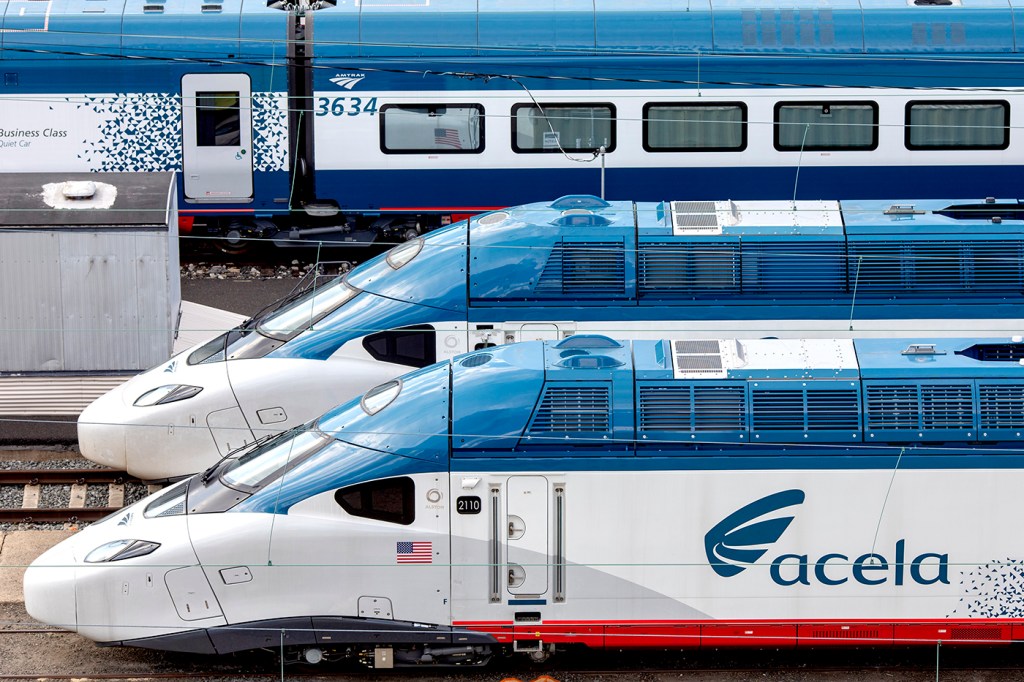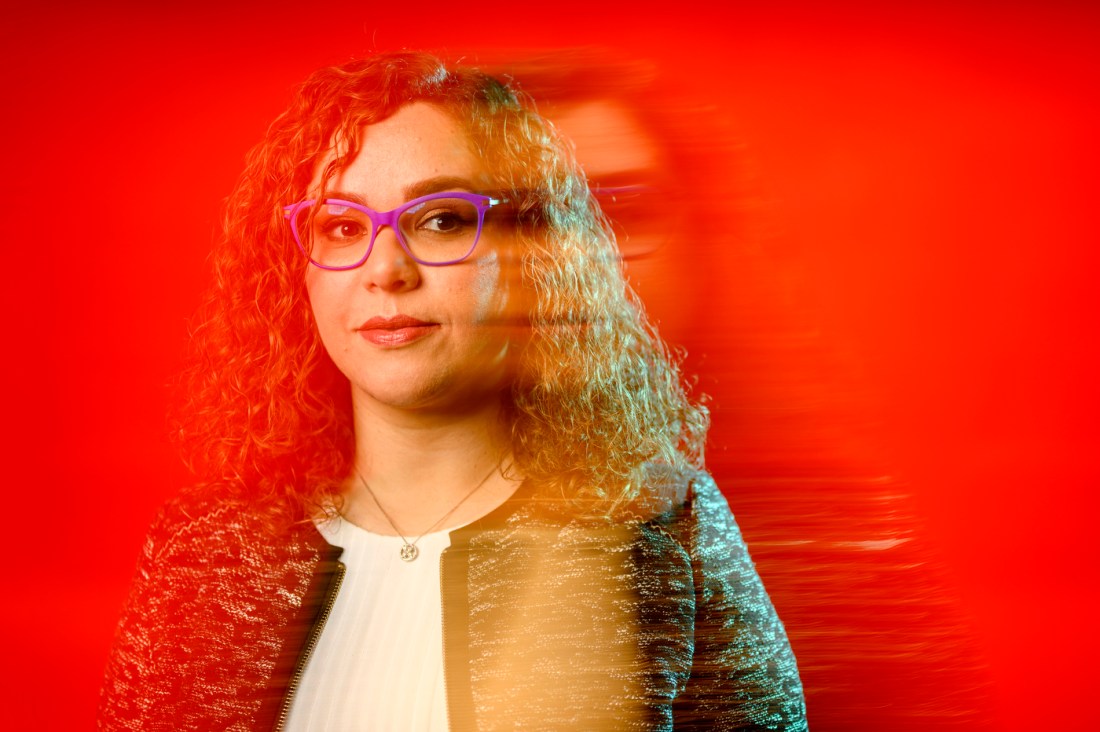Why the US doesn’t yet have ‘high-speed’ rail — and why that could soon change
Recent investments in rail infrastructure has some asking: Are we witnessing the arrival of high-speed rail, heralding a long-awaited shift away from vehicle emissions toward eco-friendly mass transit?

Projects that would bring “high-speed” trains to connect metropolitan areas across the country are starting to break ground, and Amtrak is beginning to test faster trains in the Northeast.
The Biden administration also recently announced a $6 billion investment to deliver “world-class high-speed rail,” and to “launch new passenger rail corridors across the country.” These developments have many asking: Are we witnessing the arrival of high-speed rail, heralding a long-awaited shift away from vehicle emissions toward eco-friendly mass transit?
Serena Alexander, associate professor with a joint appointment in the schools of Civil and Environmental Engineering and Public Policy and Urban Affairs, says bullet trains are certainly feasible in the U.S., but would require significant investment, planning and restructuring of the existing system to make it possible.

In short, the effort calls for nothing short of a complete transformation of U.S. infrastructure — a multi-trillion dollar package that would entail a significant reshaping of legislative priorities.
Editor’s Picks
Alexander, who worked for the U.S. Department of Transportation’s Climate Change Center and served as a visiting scholar with the Office of the Under Secretary, has spent her career researching efforts to decarbonize transportation. The question motivating her: How can we build a more sustainable, resilient and equitable transportation system?
Could high-speed rail help bridge the gap between the emissions-heavy present, and a more resilient, electrified future? Alexander shared some thoughts with Northeastern Global News.
Her comments have been edited for brevity and clarity.
What would a national high-speed rail network in the U.S. look like?
I think you have to look at global standards; so that would translate into trains that go around 200 miles per hour or more. But our rail infrastructure, in many cases, is too old to support trains at those speeds. If we invest in purchasing the trains when we don’t have the underlying system to run them, it’s like buying a supercomputer if you don’t even know how to use an Excel spreadsheet. You wouldn’t. It doesn’t make any sense, so it doesn’t make sense to purchase or to invest in bullet trains that have the capacity to go more than 200 miles per hour, say because of route designs, or because there are too many sharp curves, or because there are too many old bridges and deteriorating tunnels. If we want faster trains, we have to fix the infrastructure first.
Where do we start? A responsible approach would be to start with the areas where there is the most demand. Our rail infrastructure combines freight and passenger in many parts of the country, and that can be a real hurdle because freight is always prioritized. If the trains are going fast, then there is the potential issue of bottlenecks and traffic that the system cannot handle. So there’s also the question of how we should think about freight, how we should think about passenger rail, and which areas have the greatest need? These are not easy problems.
Several states, including Texas and California, have already begun projects that could bring bullet trains into metropolitan areas, connecting cities region-wide. Do you see these developments as a positive step, or are they dampened by the ongoing political paralysis in Washington?
I don’t think that I can answer the question about whether the political will is there. But what I do know is that there is a lot of interest, whether from community members and stakeholders, or government agencies. It’s important to understand that building this greener national transit system might be one of the only ways that we can achieve our goal of transportation decarbonization.
Many times, you see people comparing us to other European countries, or China. Everybody knows that we’re behind some of these other nations on rail; but you can’t really make these comparisons. When the Chinese government decides it wants to build rail, it just does it. They take land, and they develop it very quickly. That’s not how things work here in the U.S.
Another tricky component here is that sometimes we bundle these infrastructure decisions with other policy measures or requirements. These requirements are often well-intended, but can make the implementation more complicated. For example, we authorize investments in a certain infrastructure project, but it might require that we source the parts from American companies. Now, if we are behind in rail technology, does that also mean that we didn’t invest enough in the development of parts required for a sophisticated rail project? Most likely yes. We often bundle all kinds of policy measures that can potentially complicate things; like the fact that over the years we have done a lot to protect people from unfair eminent domain and other unfair practices, and rightfully so. But the point that I want to emphasize is that just because it is complicated and difficult, it doesn’t mean it isn’t worthwhile to pursue transformational change. It just means that we have to be creative about how we go about it.
How do you think high-speed rail fits into this holistic picture of a forward-looking transportation system?
When I think about high-speed rail, I think about the fact that it can really be a transformative solution. That is, it can transform our lives. Yes, it will be expensive. Yes, it will take a lot of effort. It will take annual appropriations and commitment that continues over several administrations. But if you think about this and compare it to the way we built the highway infrastructure system — that took decades. It took us years of investing into this infrastructure. Just because this would be an expensive undertaking doesn’t mean it would be a bad investment. So we should think about it in the same way we built our highway infrastructure — you can’t decide that you’re going to do it and expect to see results immediately. That’s because our infrastructure is seriously outdated; there have been many years of disinvestment in our infrastructure.
When you have a large infrastructure investment plan, a good chunk of the money will just go to maintenance and making sure that our infrastructure can respond to current needs. That won’t get us to bullet trains right away because of all the years of deferred maintenance and disinvestment. If you understand that and also understand that, again, this is expensive and complex, you’ll start to get a clearer picture of the potential.
Can you talk about the problem, as you see it, with our current transportation system?
Transportation is the largest source of greenhouse gas emissions in the United States, and over the past decade or so, we have made a lot of progress in the area of reducing emissions from other sectors that contribute to this overall emissions picture, such as energy. But we haven’t been as successful in the area of transportation. In fact, many state governments and local governments that have been developing climate action plans are finding that per capita vehicle miles traveled is actually increasing. Unfortunately, in many areas in the U.S., so many people are driving more, and when you consider the fact that more than 80% of all transportation emissions come from trucks and passenger cars, it’s a big problem.
It is no secret that if you want to decarbonize transportation, if you want to build a system that does not heavily contribute to anthropogenic climate change, we really have to reverse this trend. We have to really think about alternative modes of transportation.
We have to think about fuel sources that are greener, while also developing technology that will enable us to be a lot more fuel efficient at the same time. And we have to think about land-use as well — how we are building communities, and how they’re connected. I’m talking about equity here: meeting our climate goals and building a greener transportation system requires us to think about how we can go about it in an equitable way. This, of course, requires a holistic approach.










